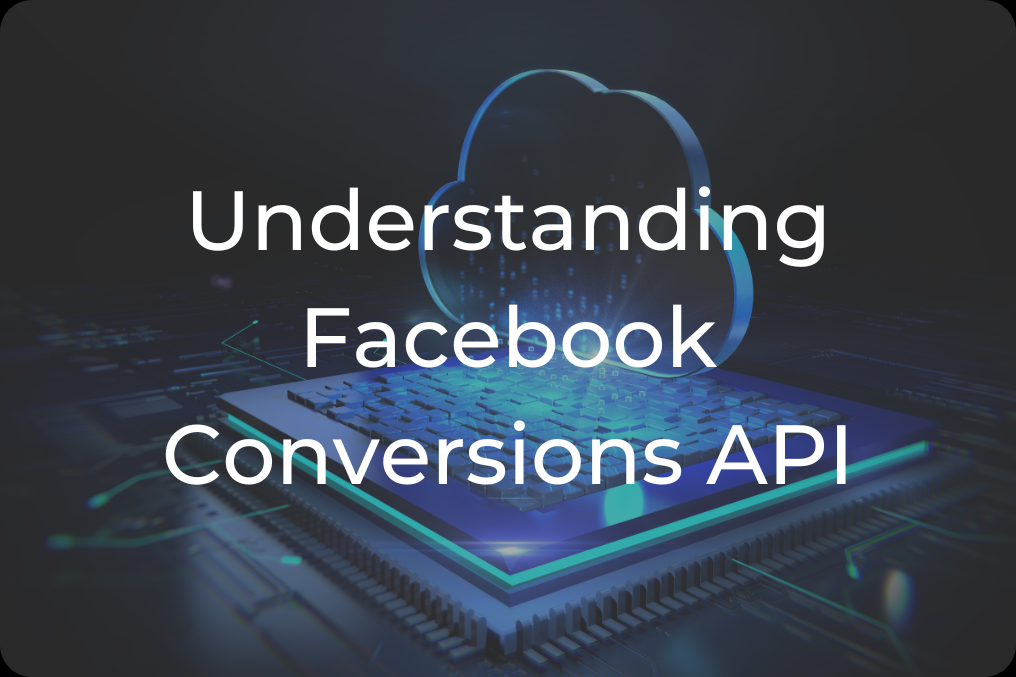
“We’ll help you boost performance, simplify processes, and drive growth with data solutions.”
Maximizing ROI: How Marketing Data Analytics Can Transform Your Business
In today’s highly competitive digital landscape, businesses are constantly looking for ways to optimize their return on investment (ROI) and gain a competitive edge. One of the most powerful tools for achieving this is marketing data analytics. By leveraging the power of data, businesses can transform their marketing efforts, making them more targeted, efficient, and results-driven.
Table of Contents
Toggle
As said by famous American statistician and management consultant W. Edwards Deming “Without data, you’re just another person with an opinion.”
It emphasizes the need to move beyond guesswork and embrace data-driven decision-making.
In this blog we will explore in detail how marketing data analytics is transforming businesses, from understanding customer behavior to optimizing campaign performance. We’ll dive into real-world examples, latest trends, and essential tools that you can implement to see tangible improvements in your marketing efforts. By the end of this post, you’ll understand why marketing data analytics is the secret sauce to unleashing the full potential of your business.
What Is Marketing Data Analytics?
Before we dive deep into the transformational impact of marketing data analytics, it’s essential to define what it is. In simple terms, marketing data analytics involves the collection, processing, and interpretation of data related to your marketing efforts. This data can come from a variety of sources, including website traffic, social media engagement, email campaigns, and even offline activities.
By analyzing this data, businesses can derive actionable insights, helping them:
1. Identify key trends in customer behavior.
2. Understand the effectiveness of various marketing channels.
3. Optimize marketing budgets and resources.
4. Improve customer targeting and personalization.
Why Is Marketing Data Analytics Critical to Business Success?
Marketing Data Analytics is critical to business success because it provides the insights needed to make informed decisions, optimize strategies, and drive sustainable growth. In the modern business world, being data-driven isn’t a luxury; it’s a necessity. Data-backed decisions allow businesses to:
1. Optimizing Marketing Campaigns: Analytics allow businesses to measure the performance of their marketing campaigns in real-time. By understanding which campaigns are delivering results and which are not, companies can allocate resources more efficiently, adjusting strategies for better outcomes. This minimizes wasted ad spend and ensures marketing budgets are used where they have the highest impact.
2. Enhance Customer Experience: Through analytics, businesses can identify key drivers of customer satisfaction and retention. Personalization and targeted messaging based on customer data improve engagement and loyalty. This leads to improved loyalty, higher lifetime value, and stronger relationships with customers, which are essential for long-term success.
3. Outperform Competitors: Companies that excel in data analytics are more agile and able to adapt to market trends. Marketing Data Analytics can help businesses outperform competitors by leveraging data to make smarter decisions, enhance customer experiences, and optimize marketing strategies.
4. Measuring ROI and Growth: Analytics make it easier to measure the return on investment (ROI) of marketing efforts. Businesses can track the exact impact of marketing activities on revenue and growth, allowing for continuous refinement of marketing strategies. This ensures that every marketing dollar is spent effectively, driving business growth.
The Importance of Marketing Data Analytics in Today’s Business World
Marketing data analytics has become a fundamental component of business strategy. By analyzing data from various marketing channels, businesses can better understand their customers, optimize marketing efforts, and improve overall ROI.
Data-driven marketing allows companies to:
1. Enhance Targeting and Personalization – Tailoring marketing campaigns to individual customers based on their behavior and preferences.
2. Optimize Spending – Allocating budgets more effectively based on campaign performance data.
3. Measure Success – Tracking the success of campaigns through key metrics like conversion rates, customer acquisition costs, and lifetime value.
4. Predict Future Trends – Using predictive analytics to forecast market trends, customer behavior, and future sales.
5. Improve Customer Experience – Delivering more personalized experiences that improve customer satisfaction and loyalty.
The Latest Marketing Data Analytics Trends
The latest trends in marketing data analytics are transforming how businesses approach customer engagement and optimize campaigns. These trends underscore the growing importance of data-driven decision-making in modern marketing, enabling brands to deliver more targeted, personalized, and efficient campaigns.

1. AI and Machine Learning Integration
AI and machine learning are revolutionizing marketing data analytics by automating complex data analysis and providing deeper insights. These technologies can process massive datasets, identify patterns, and make predictions with incredible accuracy. AI-driven analytics tools allow businesses to personalize customer experiences at scale, predict customer behavior, and optimize marketing efforts in real-time.
2. Omnichannel Analytics for a Unified Customer View
As consumers engage with brands across multiple channels (social media, websites, emails, etc.), businesses need a unified view of these interactions. Omnichannel analytics provides a holistic view of the customer journey, allowing businesses to deliver seamless and personalized experiences across all touch points.
3. Real-Time Data for Instant Insights
With real-time data analytics, businesses can respond to market changes and customer behaviors instantly. This capability is especially crucial in fast-paced industries where immediate decisions can mean the difference between success and failure. Real-time data allows businesses to optimize live campaigns, respond to customer queries faster, and adjust marketing strategies on the fly to maximize ROI.
4. Privacy-Focused Analytics
As consumers become more aware of data privacy concerns, regulations like GDPR and CCPA are reshaping the data landscape. Marketers need to prioritize ethical data collection and usage practices, obtaining explicit consent, ensuring data security, and providing transparency into how data is being used.
How to Implement Marketing Data Analytics in Your Business?
Embracing marketing data analytics doesn’t require a complete business overhaul. It’s about taking a strategic, step-by-step approach to integrate data-driven decision-making into the very DNA of your marketing efforts. Let’s explore a roadmap to guide your journey:
1. Define Clear Objectives and KPIs
Before diving into spreadsheets and charts, it’s crucial to define your marketing goals. What are you hoping to achieve with data analytics? Increased brand awareness? Higher website traffic? Improved lead generation?
Once your objectives are clear, identify the Key Performance Indicators (KPIs) that will track your progress. These might include metrics like website traffic, conversion rates, customer lifetime value (CLTV), or return on ad spend (ROAS). By establishing clear objectives and KPIs upfront, you’ll ensure that your data analysis efforts are focused and aligned with your overall business goals.
2. Choose the Right Tools for the Job
The right tools can make all the difference in your data analytics journey. Thankfully, there’s a plethora of options available, catering to businesses of all sizes and budgets.
- Free Tools: Google Analytics is a great starting point, offering a wealth of data on website traffic, user behavior, and campaign performance. Social media platforms like Facebook and Twitter also provide free analytics dashboards for tracking engagement metrics.
- Paid Tools:For more advanced features and deeper insights, consider investing in paid tools like HubSpot, Adobe Analytics, or Salesforce Marketing Cloud. These platforms offer robust functionalities for marketing automation, customer relationship management (CRM), and predictive analytics.
- Specialized Tools: Depending on your specific needs, you might also explore specialized tools like SEMrush or Ahrefs for SEO analysis, Hotjar for website heatmaps, or BuzzSumo for social media listening.
3. Collect Clean and Relevant Data
Data is only as valuable as its quality. Garbage in, garbage out, as the saying goes. Before you can extract meaningful insights, you need to ensure that you’re collecting clean, accurate, and relevant data.
- Implement a Tag Management System: Use a tag management system like Google Tag Manager to streamline the process of adding and managing tracking codes on your website. This ensures that your data is collected consistently and accurately.
- Data Cleansing and Validation:Regularly audit your data sources and implement processes to cleanse and validate your data. This might involve removing duplicate entries, correcting errors, or standardizing data formats.
- Focus on First-Party Data: Prioritize the collection of first-party data – information collected directly from your audience through interactions with your website, apps, and other touchpoints. This data is typically more accurate and valuable than third-party data.
4. Visualize and Analyze Your Data
Once you have clean and relevant data flowing in, it’s time to turn those numbers into actionable insights. Data visualization tools like Tableau and Power BI can help you transform complex datasets into visually appealing and easy-to-understand charts, graphs, and dashboards.
- Identify Trends and Patterns:Look for recurring patterns or trends in your data that can provide insights into customer behavior, campaign performance, or market opportunities.
- Segment Your Audience:Use data to segment your audience into distinct groups based on shared characteristics, behaviors, or preferences. This enables you to personalize your marketing efforts and improve targeting.
- Measure Campaign Effectiveness:Track the performance of your marketing campaigns in real-time, analyzing metrics like click-through rates, conversion rates, and ROI. This allows you to make data-driven adjustments and optimize your campaigns for better results.
5. Turn Insights into Action
The insights you get from your data should inform your marketing strategies, helping you to refine your messaging, optimize your campaigns, and improve your overall marketing ROI.
- A/B Testing:Use A/B testing to experiment with different versions of your marketing materials, like email subject lines, ad copy, or landing page designs. This data-driven approach helps you identify what resonates best with your audience and optimize your campaigns accordingly.
- Personalization:Leverage data to personalize your marketing messages and offers, delivering content and experiences tailored to individual customer preferences and behaviors.
- Marketing Automation:Implement marketing automation tools to streamline repetitive tasks, nurture leads, and deliver personalized content at scale. This allows your team to focus on more strategic initiatives.
6. Embrace a Culture of Continuous Improvement
Implementing marketing data analytics is not a one-time project; it’s an ongoing process of continuous improvement. As you gather more data and refine your analysis techniques, you’ll uncover new insights and opportunities for optimization.
Foster a culture of data-driven decision-making within your organization, encouraging collaboration between marketing, sales, and other departments. By embracing data as a guiding force, you can unlock the full potential of your marketing efforts and achieve sustainable business growth.
How Marketing Data Analytics Maximize ROI?
1. Optimizing Marketing Campaigns
One of the core strengths of marketing data analytics is its ability to optimize campaigns in real-time. With access to data from different channels, businesses can track the performance of their campaigns and adjust strategies accordingly. Analytics tools can reveal which campaigns resonate most with target audiences, resulting in better engagement and conversion rates.
For instance, A/B testing—a common strategy in marketing analytics—helps businesses compare different versions of a campaign to see which one performs better. This data-driven approach eliminates guesswork and ensures that marketing efforts are fine-tuned for maximum impact.
Example: Coca-Cola’s Personalized Marketing Campaigns
Coca-Cola uses marketing data analytics to power its highly successful personalized campaigns. By analyzing customer preferences and behavior, Coca-Cola delivers tailored ads and promotions that resonate with individual consumers. This personalized approach significantly boosts engagement, leading to higher sales and a stronger ROI. Coca-Cola has reported an increase in ROI of up to 7x on some of its data-driven campaigns.
2. Enhanced Targeting and Personalization
Modern consumers expect personalization in their interactions with brands. Thanks to marketing analytics tools, businesses can segment their audience based on demographics, behaviors, purchase history, and more. By tailoring content, offers, and messaging to specific segments, businesses create highly relevant marketing experiences that drive conversions.
Example: Netflix’s Content Recommendations
Netflix is a master at leveraging marketing data analytics to deliver personalized experiences. The company uses advanced algorithms to recommend content based on viewers’ previous behaviors and preferences. This personalized approach has proven highly effective, with Netflix stating that 80% of the content watched by users is a result of personalized recommendations. This not only enhances customer satisfaction but also keeps users engaged, reducing churn and driving long-term revenue.
3. Improving Customer Retention and Lifetime Value
Analytics can help businesses understand why customers churn and what keeps them loyal. By analyzing customer feedback, engagement patterns, and transaction history, businesses can create more effective loyalty programs and retention strategies.
A key metric in this context is customer lifetime value (CLV)—the total revenue a business can anticipate from a customer throughout their relationship. By using data to understand and improve CLV, businesses can significantly boost ROI.
Example: Starbucks’ Loyalty Program
Starbucks has implemented a highly successful rewards program powered by marketing data analytics. By analyzing customer preferences, Starbucks can send personalized offers and promotions to its loyalty members, encouraging repeat purchases. This data-driven approach has resulted in a 25% increase in mobile orders and a significant boost in overall customer retention.
4. Predicting Future Trends with Predictive Analytics
Predictive analytics is one of the most exciting and valuable tools in the world of marketing data analytics. By using historical data to forecast future outcomes, businesses can anticipate customer behavior, market trends, and sales performance.
It helps businesses allocate resources more effectively, optimize product launches, and stay ahead of competitors. The use of machine learning and AI-driven analytics enhances the accuracy of these predictions, making them invaluable for future planning.
Example: Amazon’s Predictive Shipping
Amazon uses predictive analytics to estimate demand for products before customers even place an order. By analyzing data from previous purchases, search queries, and browsing behavior, Amazon can predict which items customers are likely to buy next. This insight allows Amazon to position inventory closer to the customer, reducing shipping times and improving the overall customer experience.
How DataActs through Marketing Data Analytics Can Transform Your Business?
Marketing Data Analytics from DataActs can significantly transform your business by leveraging insights from data to enhance decision-making, optimize marketing efforts, and drive growth.

Here’s how:
1. Better Understanding of Customer Behavior
DataActs uses advanced analytics tools like Google Analytics 4, Adobe Analytics, and Segment to help you track and analyze customer behavior across multiple channels. This allows you to:
- Understand what drives customer engagement.
- Identify high-performing marketing channels.
- Tailor marketing campaigns to meet customer needs and preferences, improving conversion rates.
2. Optimized Marketing Campaigns
With MarTech Consultation and CDP Tool Implementation, DataActs integrates marketing technologies and customer data platforms, enabling your business to:
- Create highly personalized campaigns based on user preferences and behaviors.
- Track campaign performance in real time to quickly adapt strategies.
- Reduce wasted ad spend by targeting the right audiences with precise messaging.
3. Improved Customer Journey Mapping
DataActs can help you map out customer journeys using event tracking and data visualization tools like Looker Studio and Tableau. By understanding touchpoints, you can:
- Identify friction points in the customer journey.
- Optimize user experiences to boost satisfaction and retention.
- Develop a seamless, omnichannel strategy for enhanced customer loyalty.
4. Data-Driven Decision Making
With data analytics and BI services, your team will be equipped to:
- Create custom dashboards to monitor KPIs, allowing data to guide key marketing decisions.
- Analyze data trends to anticipate market shifts or customer demands.
- Leverage predictive analytics to stay ahead of competitors.
5. Conversion Rate Optimization
Through conversion rate optimization and advanced tracking, DataActs can show you exactly how your marketing efforts translate into sales, helping you:
- Allocate resources effectively by focusing on the most profitable strategies.
- Streamline your marketing funnel to drive higher revenue.
- Track user behavior to continuously refine offers, products, or services for maximum return.
By integrating DataActs’ Marketing Data Analytics solutions, your business can unlock the full potential of its data, leading to enhanced marketing efficiency, improved customer experiences, and sustained growth.
Conclusion
Marketing data analytics can transform your business by providing deep insights into your audience, campaigns, and customer journey. By setting clear goals, choosing the right tools, and continuously optimizing your efforts based on data, you can maximize your ROI and drive long-term success.
Whether you’re using predictive analytics to anticipate customer needs or leveraging automation to streamline your efforts, the key to success is a data-driven mindset. As more businesses adopt advanced marketing analytics tools, those who prioritize data in their decision-making will be better equipped to thrive in today’s competitive landscape.
So, take that first step toward a data-driven future, and watch as marketing data analytics transforms your business, one insight at a time!
Ranjan Kashyap
“We’ll help you boost performance, simplify processes, and drive growth with data solutions.”


From Cookies to Customer Loyalty: The Rising Importance of First Party Data

Elevate Your Shopify Analytics: Implementing a Data Layer with GTM

GA4 and Server-Side Tagging: The Next Big Thing in Data Analytics in 2025 🚀

Cloud Data Warehouse Showdown: BigQuery, AWS Redshift, and Azure Synapse

Optimizing ETL/ELT Processes for Enhanced Data Quality: Strategies for Businesses
Explore related posts.

Understanding Facebook Conversions API: Why Use It and How to Integrate

From Cookies to Customer Loyalty: The Rising Importance of First Party Data

Elevate Your Shopify Analytics: Implementing a Data Layer with GTM

GA4 and Server-Side Tagging: The Next Big Thing in Data Analytics in 2025 🚀

Cloud Data Warehouse Showdown: BigQuery, AWS Redshift, and Azure Synapse

